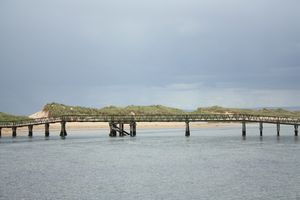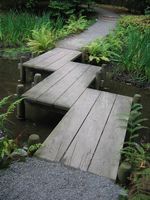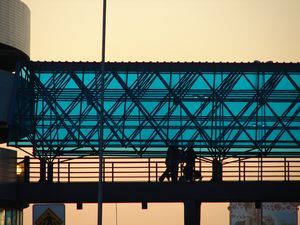Footbridge - Types, Facts and Design
Footbridge (or Pedestrian Bridge) is a bridge not designed for vehicular traffic but for pedestrians, cyclists, and even animals. If it connects two buildings and is enclosed it is then known as skyway.
First bridges in history were pedestrian bridges and they were made of wood. Ancient Rome started making stone bridges in the 2nd century BC over the Tiber River. Some of these ancient stone footbridges with arches still stand today. One of them is Ponte Fabricio which was built in 62 BC and it still has some of its original materials. Today, modern footbridges are made of wood, rope, metal and concrete.
Footbridges can have different designs, depending on the idea of designer, obstacles that it has to overcome and available materials. Here are some of them:
A “Simple Suspension Bridge” is supported entirely from anchors at its ends. Its main cables or chains are free hanging and they follow a hyperbolic curve while holding the deck. This bridge also has additional light ropes at a higher level form a handrail and help people cross it. Developing countries consider this design the most efficient and sustainable.
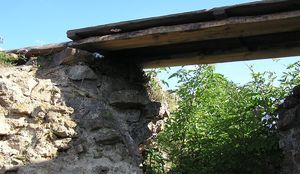
“Clapper Bridge” is a special form of bridge that was built in medieval times on the moors of Devon. This type of bridge was built across the rivers and it consists of large flat slabs of granite or schist supported on stone piers. Its name comes from Anglo-Saxon word “cleaca” which means “bridging the stepping stones.”
“Moon Bridge” is a stone arch bridge with very high arch. It is most commonly found in gardens in China (where it originated) and Japan. Its arch is semi-circular so that it, when it reflects in the calm water, symbolizes the Moon. Its arch is also high so that it allows the passage of barges beneath.
A “Step-stone Bridge” or “Stepping Stones” is one of the oldest types of bridges. It consists of slabs of rock placed in the riverbed so a river can be crossed by stepping on stones without getting wet. It also has no spans. Bridges of this type are often made by hikers in nature while they are still used in modern architecture as architectural elements of fountains and gardens.
A “Zig-Zag Bridge” has short elements (formed from planks and is supported by posts) which are placed at angle in relation to each other and changing direction left and right. This gives structural stability to this bridge which is built in water gardens and in marshes where straight bridge might tip due to the posts moving in the soft mud.
“Plank Bridge” is a simple bridge made of one or more wooden planks. Some don't have handrail at all, especially if they are made of one plank. They span a narrow obstacle. Other often have only one handrail just to provide rudimentary support to pedestrians.
Footbridges can also be built in like the standard bridges, namely like suspension bridges and beam bridges. Standard bridges can also be repurposed into pedestrian bridges when traffic is diverted into some other direction.
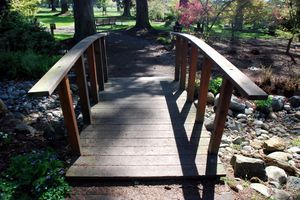
Advantage of footbridges is that they provide safer crossing over the rivers, highways, railways and other obstacles. Disadvantage of footbridges can be high cost if elevators or long ramps for wheelchair users have to be built into the bridge.
Some of world's footbridges are:
- The Ponte Milvio and The Ponte Sant'Angelo in Rome;
- The Pont des Arts in Paris, The Bank Bridge and the Bridge of Four Lions in Saint Petersburg;
- The Pushkinsky and Bogdan Khmelnitsky Pedestrian bridges in Moscow;
- The Ha'penny Bridge in Dublin;
- The Big Damn Bridge in Little Rock, Arkansas
- …


